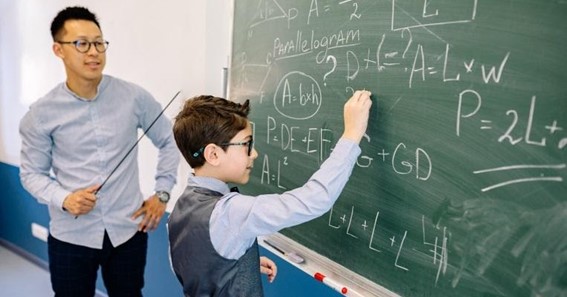Teaching is a noble profession. You get to teach young minds and try to nurture them into thriving adults. But it can also be quite challenging if you’re caught off guard. Teaching students with different learning abilities and attention spans is not a walk in the park. So, if you are going to become a teacher, you need to make learning a more wholesome experience for your students. Doing so will help students learn better and ensure you meet your teaching objectives. If you’re wondering how to help students learn better, we’ve listed a few tips below.
Use humor
Using humor in lectures is a great way to make students learn better. It helps to keep students interested and engaged in the otherwise dull course material. So incorporate funny anecdotes and facts into your lesson plan. Also, laughing at yourself and your mistakes can help you develop a rapport with your students. This will make them more willing to listen to you, and remembering information will become easier.
Treat every student differently
Every student is unique. They have unique learning abilities and needs. And it is essential to know how your students best absorb information. Students with learning disabilities tend to grasp information slower than others. Therefore, you must create a curriculum that is inclusive of every student’s learning needs. Incorporate different learning methods into your teaching style. If you’ve done an MEd in Special Education Administration, you may be at an advantage. But you can always take help from your colleagues and resources on the internet to design a curriculum suited to everyone’s needs.
Be friendly
Students experience a considerable amount of pressure nowadays. Parents often have high expectations for them. They might also feel pressure to get good grades because they want to get into a good college. Keeping up with peer pressure can also be difficult. So, try being more friendly towards them. Ensure they feel comfortable and relaxed during class. Helping them relieve some of their personal and academic stress in the classroom can help to improve their learning outcomes.
Create interesting assignments
Interesting assignments will not only keep them busy, but will also make them learn better. Assignments do not have to be worksheets that ask the students to write down answers. Instead, you can assign some creative and exciting tasks to give your students a taste of how fun it is to learn new things. To make homework interesting for your student, ask questions beyond what is taught in class. Encourage them to research and think out of the box. You can also assign group tasks so that students learn from their peers. Group assignments are not only fun. They also help to develop collaborative and team-building skills that will come in handy in the future.
Do fun activities
Students learn best when they are interested in the subject matter. While this may seem obvious, many parents and teachers overlook this fundamental principle of education. If students do not see an academic activity as exciting or valuable, they are unlikely to want to do it. Using a variety of fun activities can help students remember topics they are learning. This will make them want to come back to class to learn more and have fun at the same time. Teachers should always be on the lookout for new and exciting ways to stimulate different types of learning in their classes. You might find that some students prefer hands-on activities. In contrast, others learn better from role-playing or discussions. So create a balance.
Use visuals
The human brain learns better from pictures than from plain words. Hence, incorporating visual content in your course material can make a huge difference in learning outcomes. It improves retention as well as engagement. So, teach via video and visual presentations. You can use platforms such as YouTube and SlideShare to your advantage. Simplify complex text-based content with easy-to-understand diagrams and charts. Visual cues will help students learn better.
Arrange field visits
Field trips help students connect with the real world other than home, school, and their circle of friends. These trips are a fin way to make learning more practical and engaging. Students can see how the things they’re learning about apply in the real world. They will be able to come back with stories about what happened during their visit, encouraging them to pay attention. So, add field trips to places like museums, national parks, factories, etc., during the semester. You can also give them fun assignments like a photography competition or a video documentary presentation to make the experience more fun.
Introduce storytelling
Storytelling is among the most effective ways to engage students. You can use a story to explain situations and use it to solve problems. The best way to integrate stories into lessons is by using an example. Examples are usually direct stories with characters, plot, conflict, setting, etc. They can be real-life situations or based on fiction books. A good story in math class can help students learn more effectively than taking the traditional, dry approach. It will help them understand the lesson better, remember it longer, and apply it correctly in other similar situations. The questions that follow a story should be related to the story itself or have some connection with it. This will allow students to focus better on answering them instead of going off track on unrelated topics.
Conclusion
The student-teacher relationship is an essential ingredient in the recipe for success in achieving learning objectives. And there’s also no denying that learning has evolved over the ages. By finding ways to make students learn better, both teachers and students can benefit in the long run. So, integrate a few of the tips mentioned above into your teaching style. You may find your students retaining information more quickly and able to think more critically in the future.






